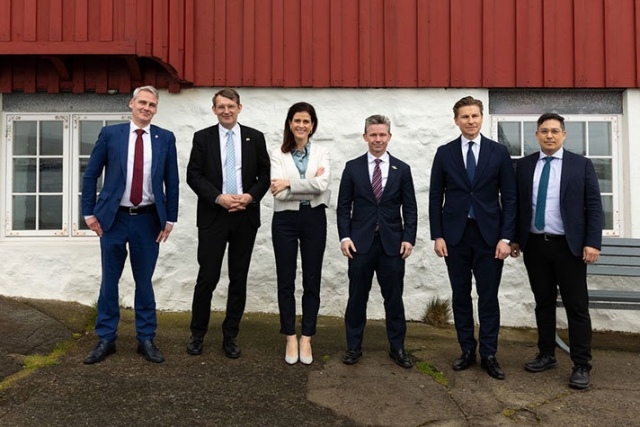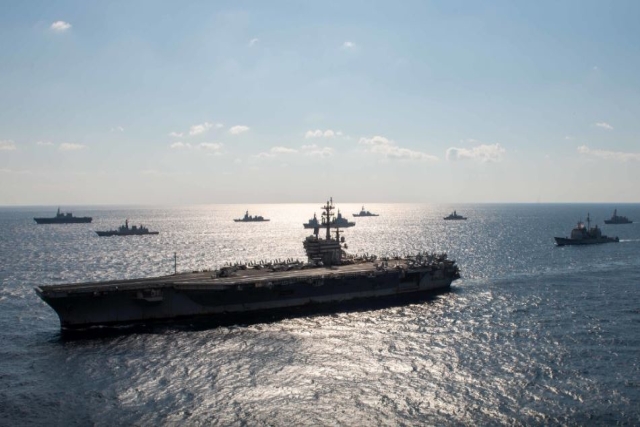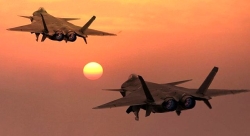Counterfeit Parts Of Aircraft And Defense Products Could Proliferate Through 3D Printing

Graham Grose, industry director at the IFS Aerospace & Defence Center of Excellence
Graham Grose, industry director at IFS Aerospace & Defence Center of Excellence, talks about protected military ecosystems, market for Internet of Things (IoT) employed on modern fast jets and increasing threat of counterfeit parts due to rise in 3D printing technology.
DW : How do you think protected military ecosystems have been implemented in global defense market?
Graham Grose: Across Asia, I'm seeing projected defense expenditure continuing to increase, while further West, military budgets are increasing for the first time in years. These increases, twinned with growth in new technology - such as the Internet of Things, 3D printing and the disruption of these in the support chain - will transform the military support environment. The complexity of equipment coming from T1 manufacturers - witness the F-35 – means that demanding and ‘protected’ ecosystems will emerge, involving multiple relationships between contractors and manufacturers based on complex contractual agreements and varying levels of capabilities. These 'protected' military ecosystems are likely to result in a more concentrated defense manufacturing market - the more protected ecosystems there are, the more competitive it will be for Tier 2 manufacturers to play their role as suppliers.
DW : What are the latest technologies in the market for the Internet of Things (IoT) employed on to modern fast jets? Elaborate.
Graham Grose: The aerospace and defense industry is no stranger to new technology – companies have been taking advantage of the Internet of Things (IoT) to improve efficiency and reduce operating costs and see real business benefits in the use of IoT. For example, the F-35 has internal and external sensors that send real-time data to a ground-based logistics support solution. Each F-35 has an autonomic logistics and information system – which IFS is a part of - so that if a jet engine develops a fault, a sensor will pick up that information and notify workers of the problem and be ready with the right parts and equipment as soon as that aircraft lands.
DW : What are the benefits of IoT implementation in military equipment? Is it cost effective?
Graham Grose: Yes, IoT implementation is proving very cost effective. Typically in A&D, the sort of benefits we're witnessing from IoT implementation are shortening aircraft turnaround times, optimizing fuel usage and consumption, improving engine efficiency and overall reduction in maintenance costs. Maintenance is a key area where IoT can help. Manufacturing and procurement constitutes only 20 percent of the total cost associated with modern fast jets - with the remaining 80 percent of costs spent through-life on in-service support. Here IoT can assist in making this 80 percent more efficient. For example, a 10 percent saving on through-life maintenance and support could equate to the procurement cost of many more military aircraft. Those are the kind of benefits that we're looking at and can attribute to this technology.
DW : Elaborate on the enterprise approach to curb the increasing threat of counterfeit parts due to rise in 3D printing technology.
Graham Grose: The threat of counterfeit parts from easily accessible 3D printers, coupled with the endless amount of designs available on the Internet, could fuel a black market. This has the potential to severely impact the support chain, enabling anyone with the technology to sell counterfeit parts at a discount and leave unsuspecting businesses at risk of poorly performing and dangerous parts. While 3D printing is rightly being welcomed in the A&D industry, it will also require key changes in ERP systems to control every element of the manufacturing, maintenance and support chain processes to manage the possibility of counterfeit parts entering the support chain. Organizations must adopt an enterprise-wide approach for the management of underlying software support solutions if the transition to an effective and safe environment is to be achieved. Ensuring complete compliance and safety in an industry as heavily regulated as aerospace and defense is paramount.
DW : What are the operational requirements and trends that are driving investments in military logistics management?
Graham Grose: Organizations will need to embrace new technology in what is a shifting geo-political landscape, or risk disrupting operational effectiveness. In the future, we will see a 6th generation of logistical solutions characterized by several developments. The soldier, the equipment and the fully integrated support chain will start to allow real-time, intelligence-led decision making and an increased agile response to changing tactical situations. Real-time optimization will become key – end-to-end but as part of the whole ‘Logistics Support Enterprise’ or ecosystem. Users will have access to quality performance data, critical to the process of continuous equipment improvement. Finally, less military/industry IS solution islands will appear. Instead we will move towards solutions where data is contractually shared across a project/platform and encompass a joint strategy rather than point KPI performance.
DW : How will Tier Two manufacturers benefit with protected ecosystems? Elaborate on agile software solutions offered by IFS Applications.
Graham Grose: Support in the defense industry is changing, transforming from solely engineering and manufacturing oriented, to focusing on platform and asset availability. Defense suppliers are now typically judged on product availability and performance over lifecycles that might last up to 50 years. Contracts to manage and maintain those products can be seriously long-term. Tier 2 manufacturers can find huge opportunity in this, but only if they are not seen as a risk to Tier 1s. To do this Tier 2 manufacturers must become not just more cost competitive but be able to demonstrate compliance while managing what are now highly complex support chains. There are tools available to help Tier 2 companies achieve this opportunity. We have just launched our Enterprise Operational Intelligence solution, part of IFS Applications, which allows defense organizations to map, monitor and manage the entire support chain or defense enterprise. IFS EOI can help analyze and make sense of the performance of the entire support chain, then subsequently model and implement the next steps required to increase operational and budgetary efficiency. IFS EOI has the capability to model operational readiness, providing Operations Commanders with an answer to the question,“Are we ready to perform the mission in a timeframe between x and y?” If the answer is negative, EOI can analyze what issues need addressing in order to meet the mission deadline.
DW : What are the challenges faced while implementations of such protected military ecosystems?
Graham Grose: The increasingly direct link between customers and suppliers could lead to fragmented services across the enterprise, services which have to be integrated into the wider military ecosystem. Defense products - such as an engine, weapon system or military plane - often span years or decades in their use. The contracts to manage and maintain those products can be seriously long-term, adding further to the potential fragmentation. All parties – whether it's the government, Systems Integrators (SIs), top tier manufacturers, tier two or component manufacturers – sit within the same constraints of defense contracts, which are often expensive to bid for and can involve a significant level of risk. With increased industry involvement in the support chain – as well as new technology - defense organizations need better control and visibility over increasingly fragmented logistics operations and services. A full 360 degree view of defense operations is needed if organizations are to become fully protected and better informed military ecosystems - particularly pertinent in today's unpredictable geo-political landscape. Defense departments will also have to continue to become more business-like in the way they operate – balancing value for money with operational effectiveness and safety. One of the leading examples of this capability is the Enterprise Operational Intelligence mentioned above.










